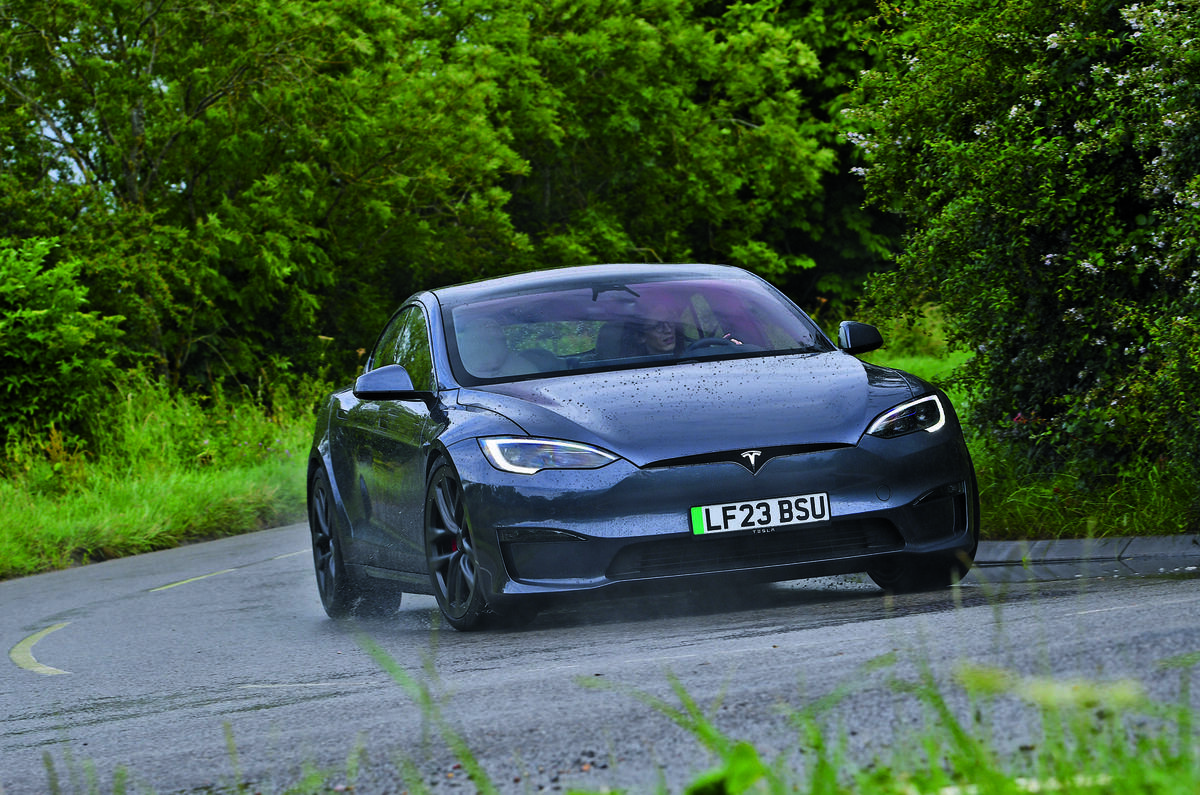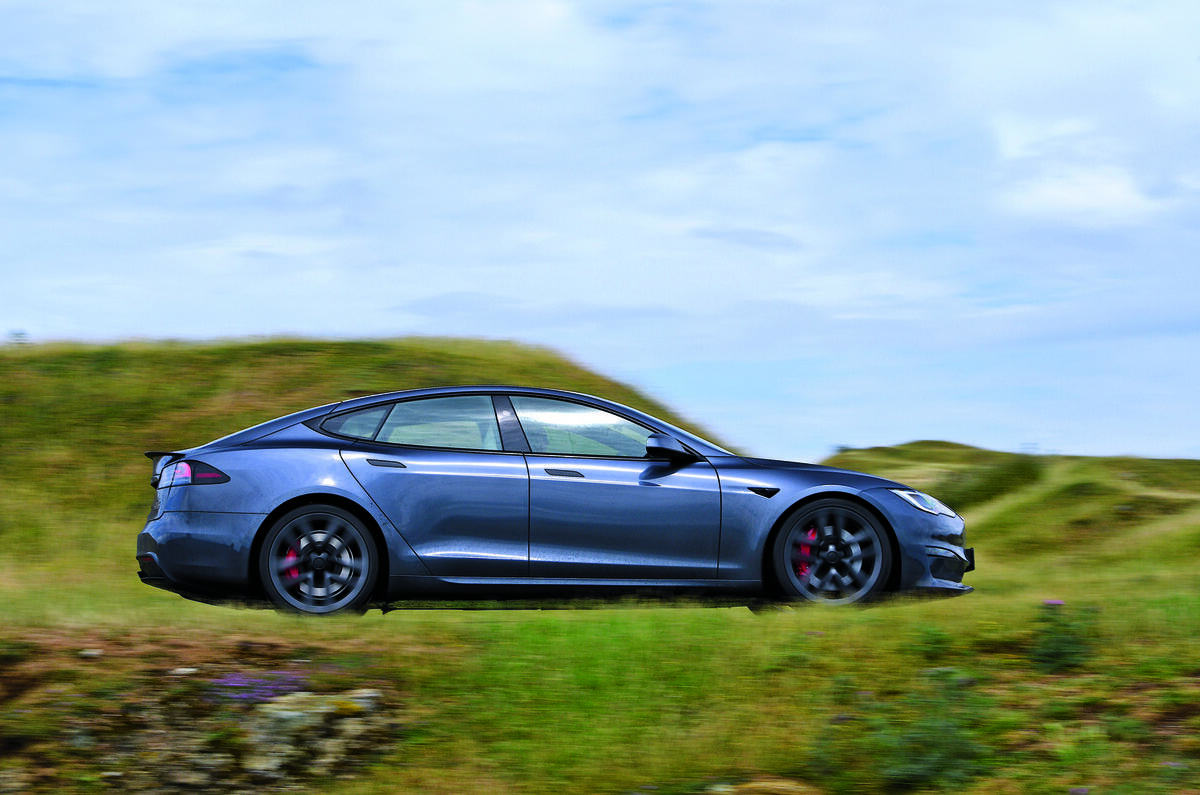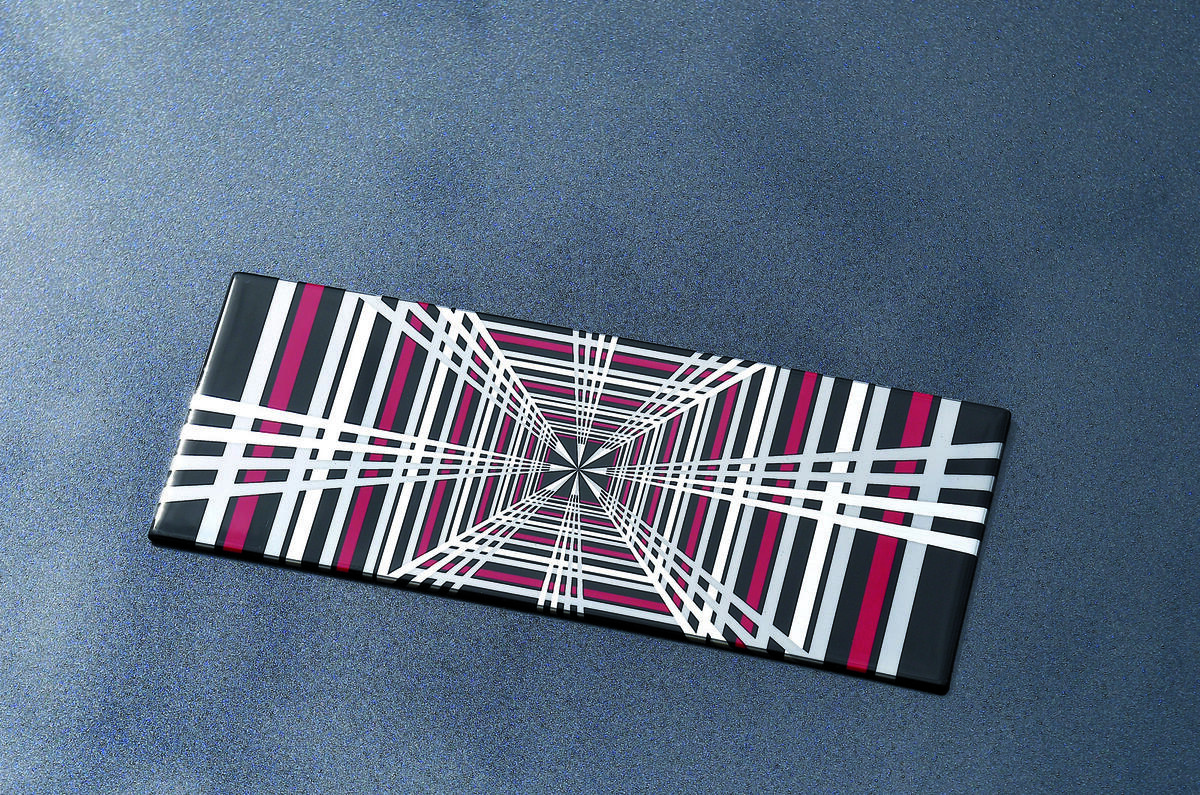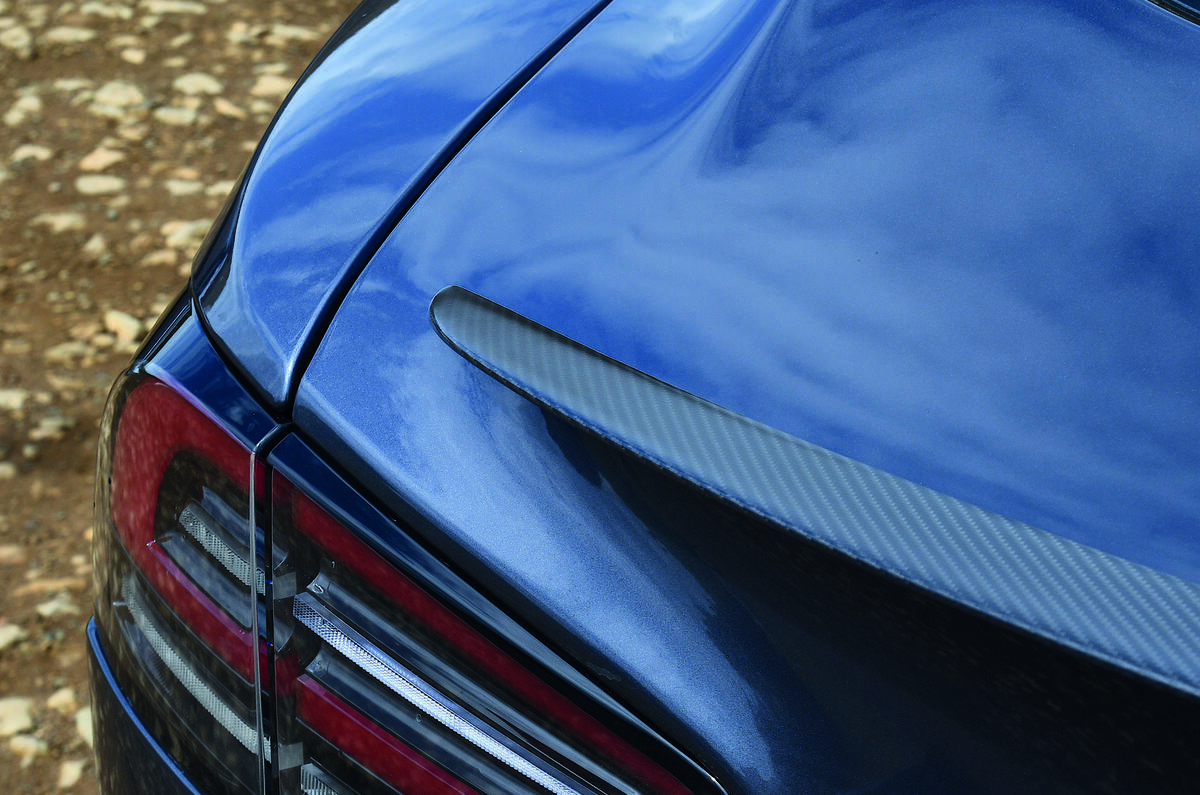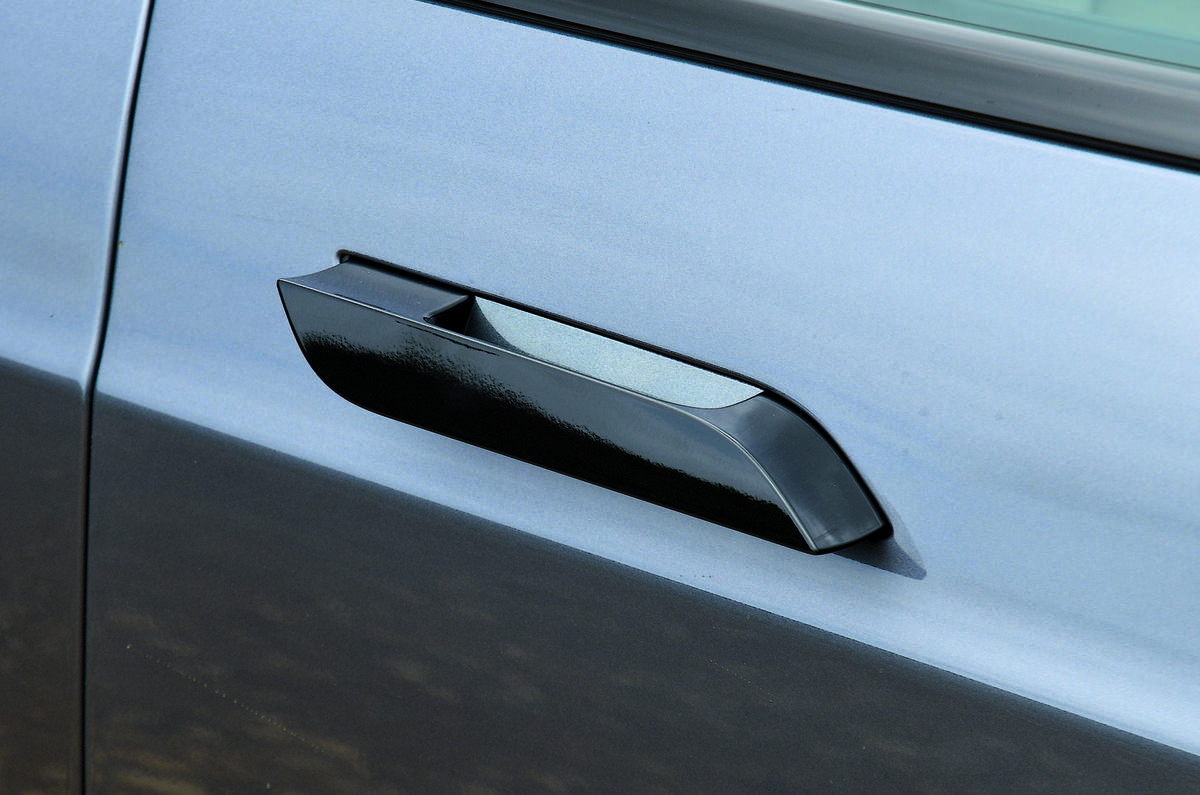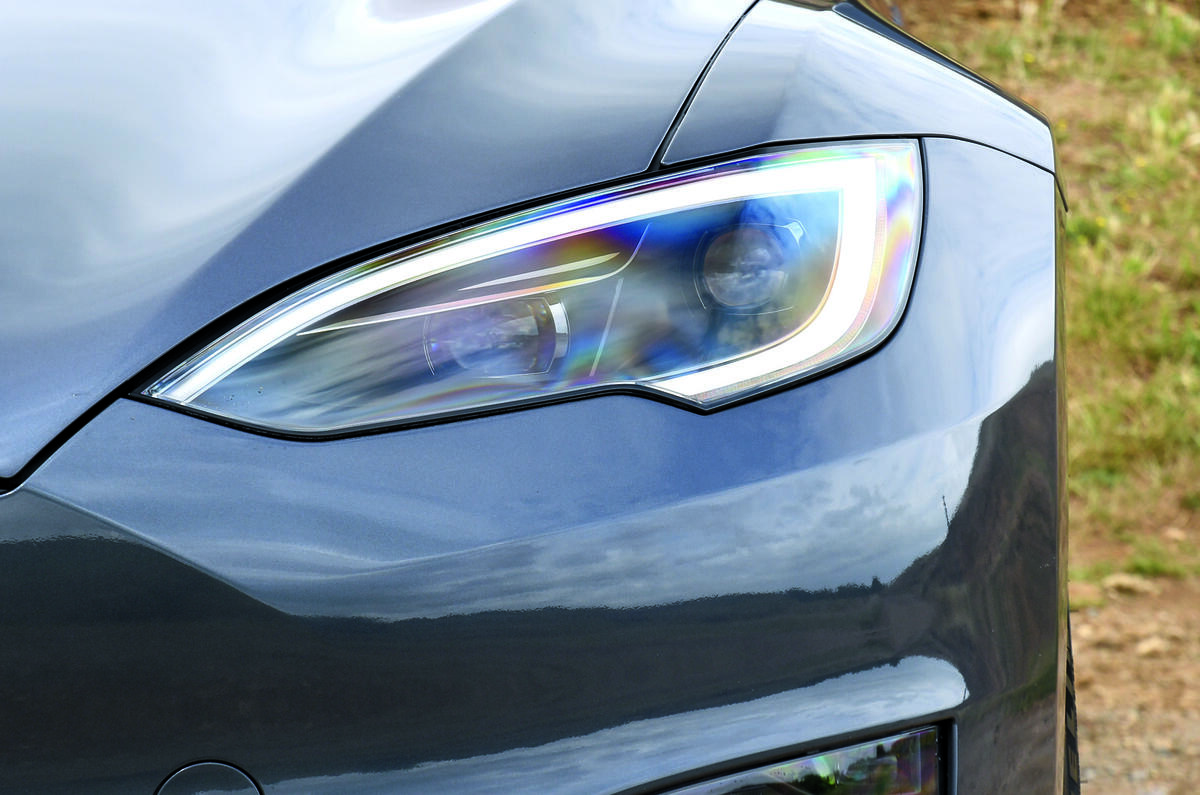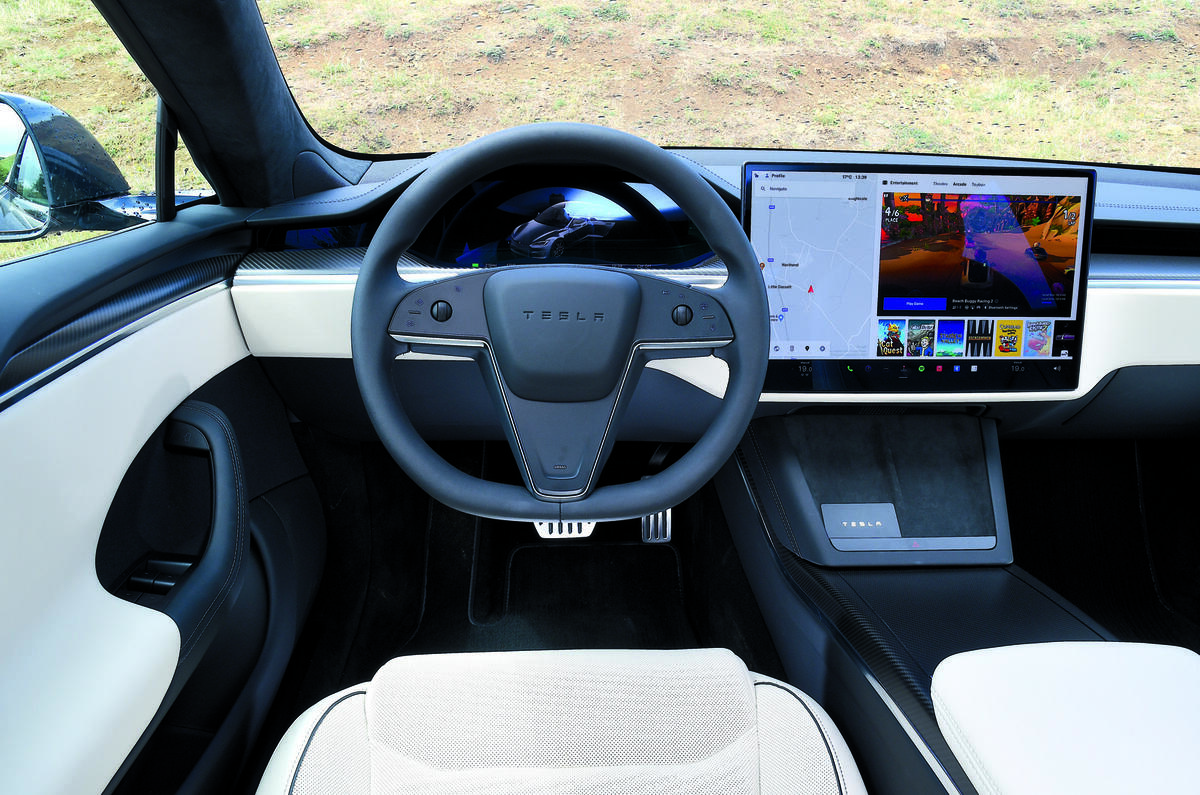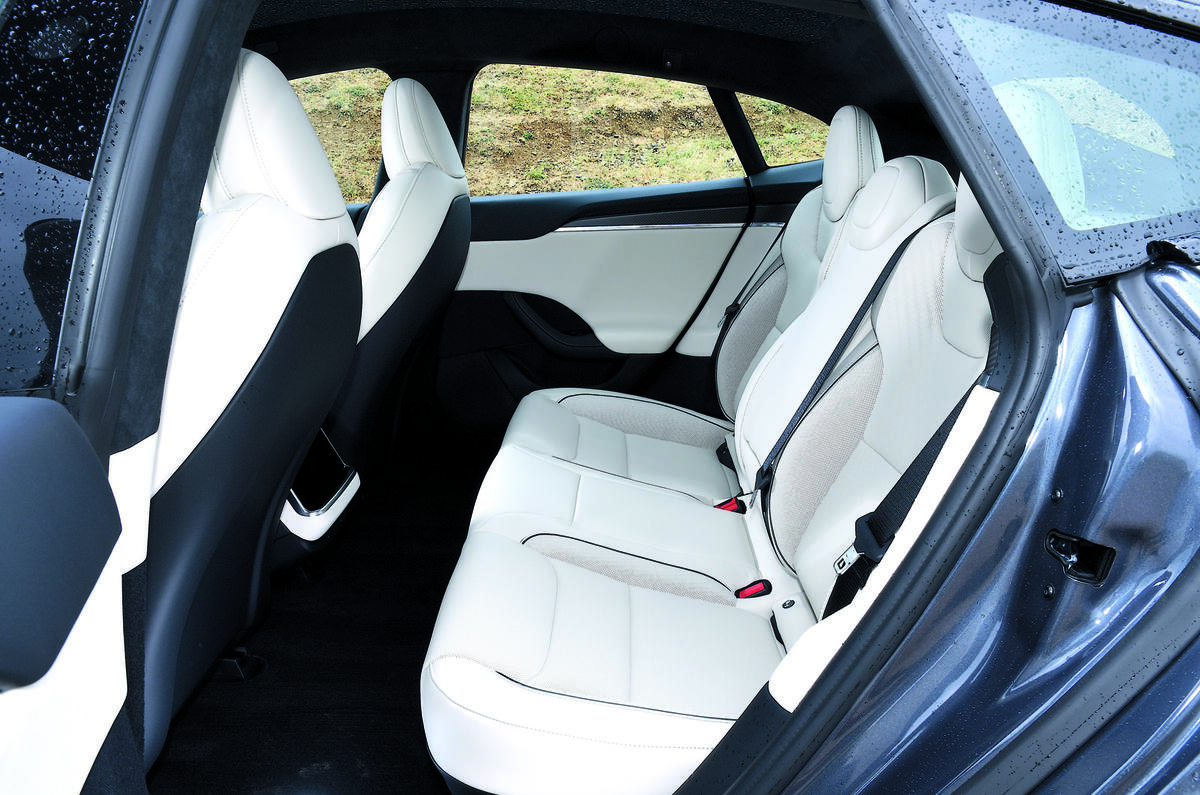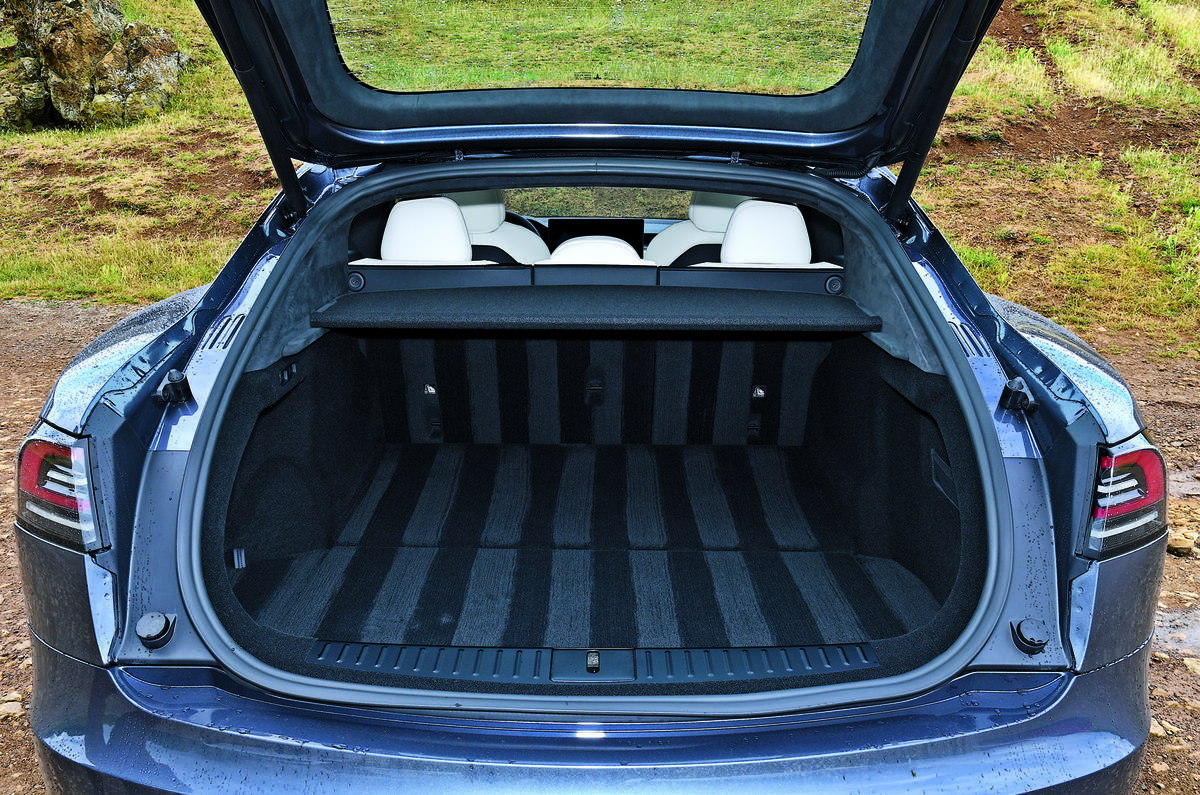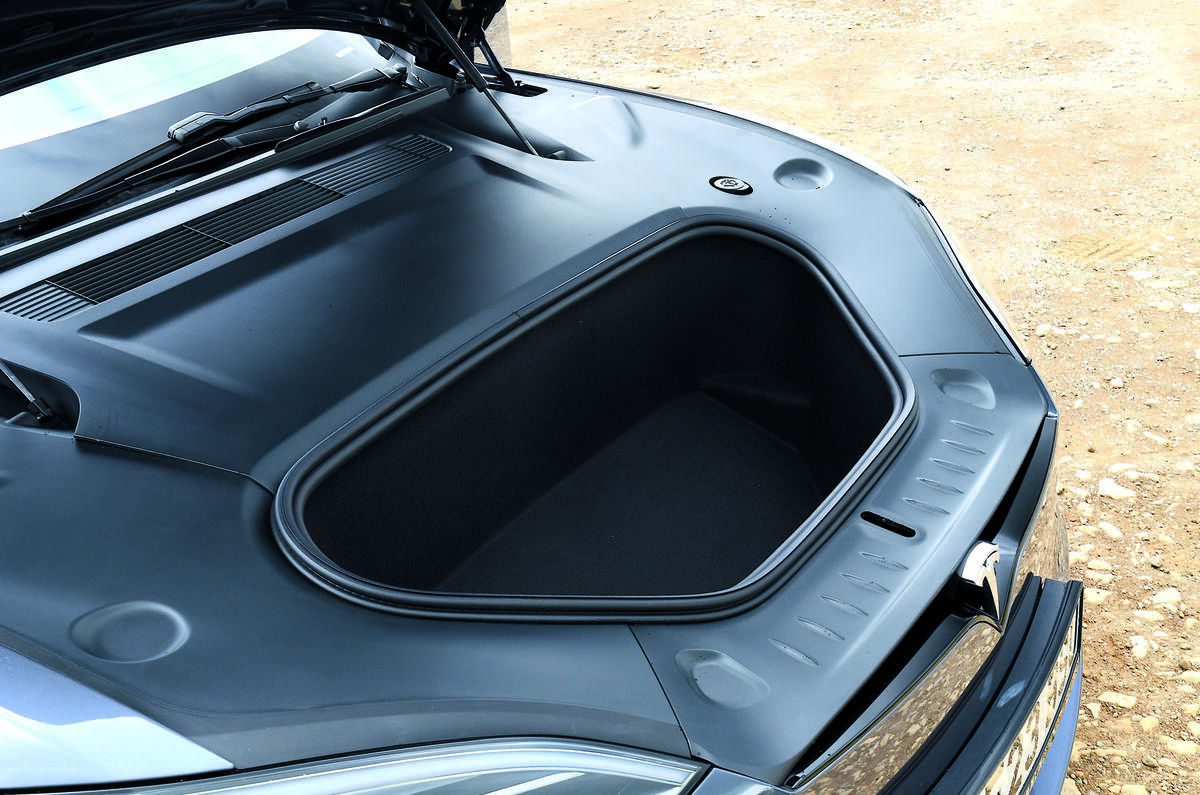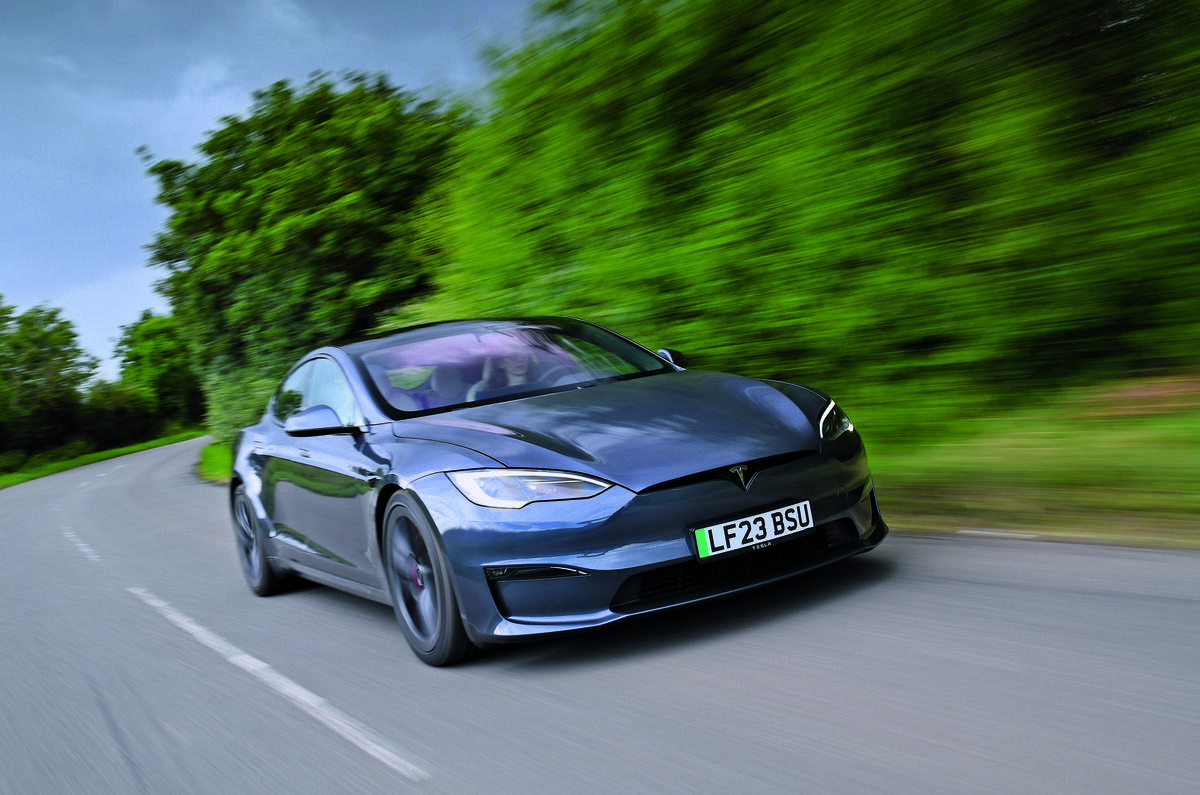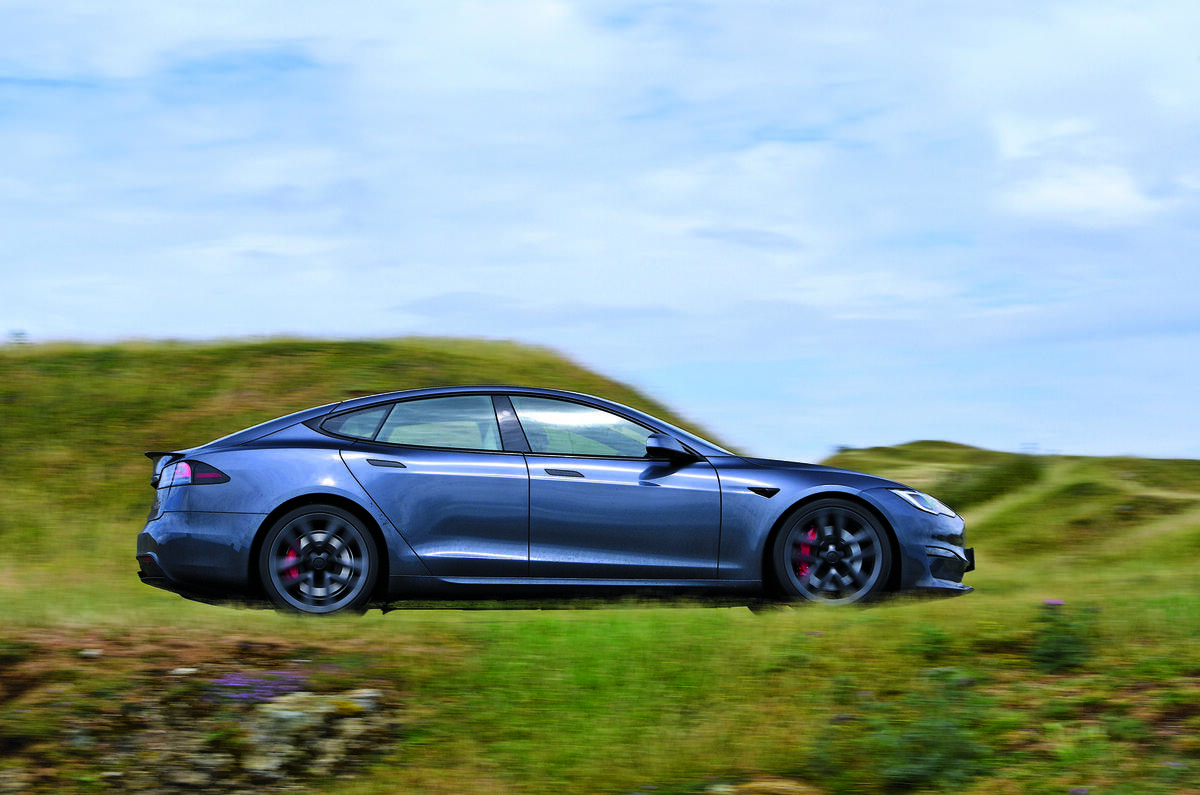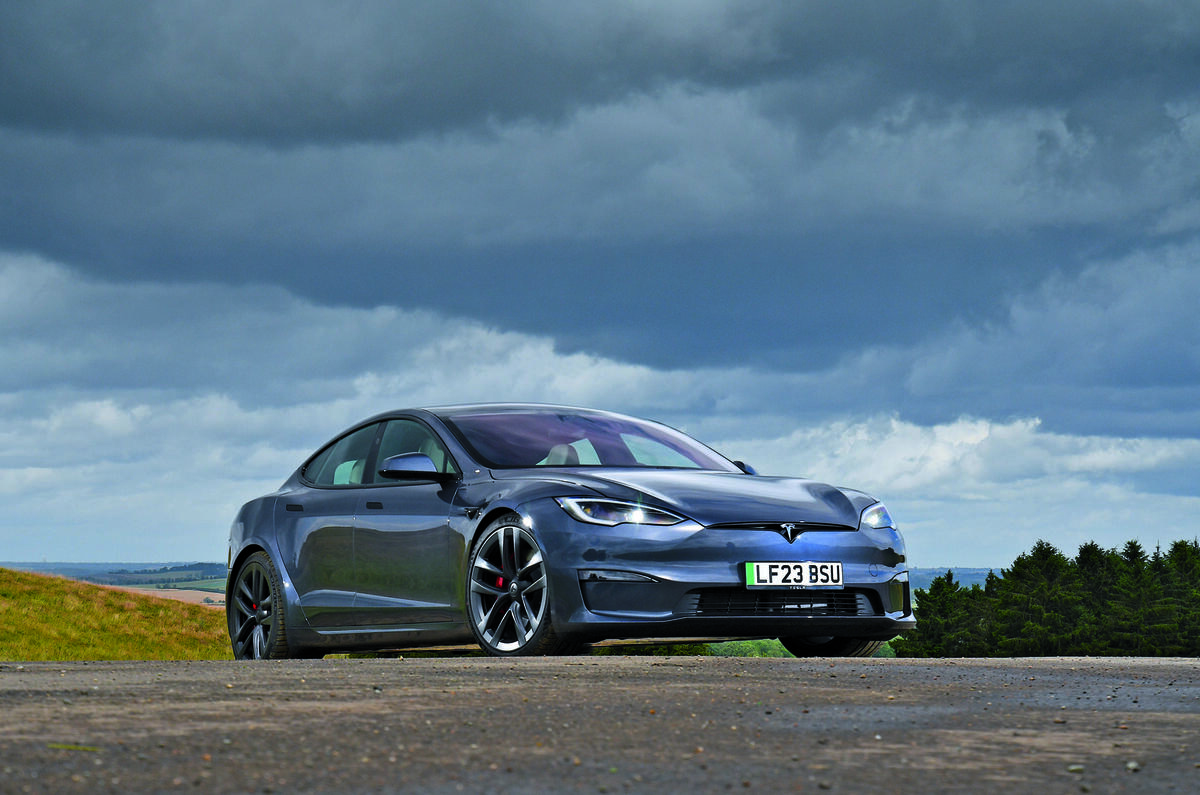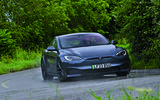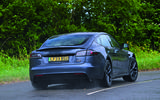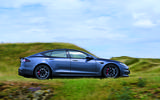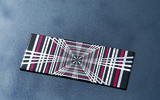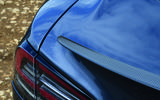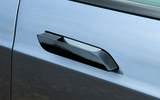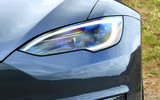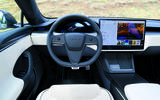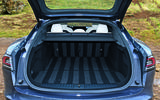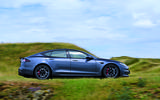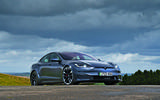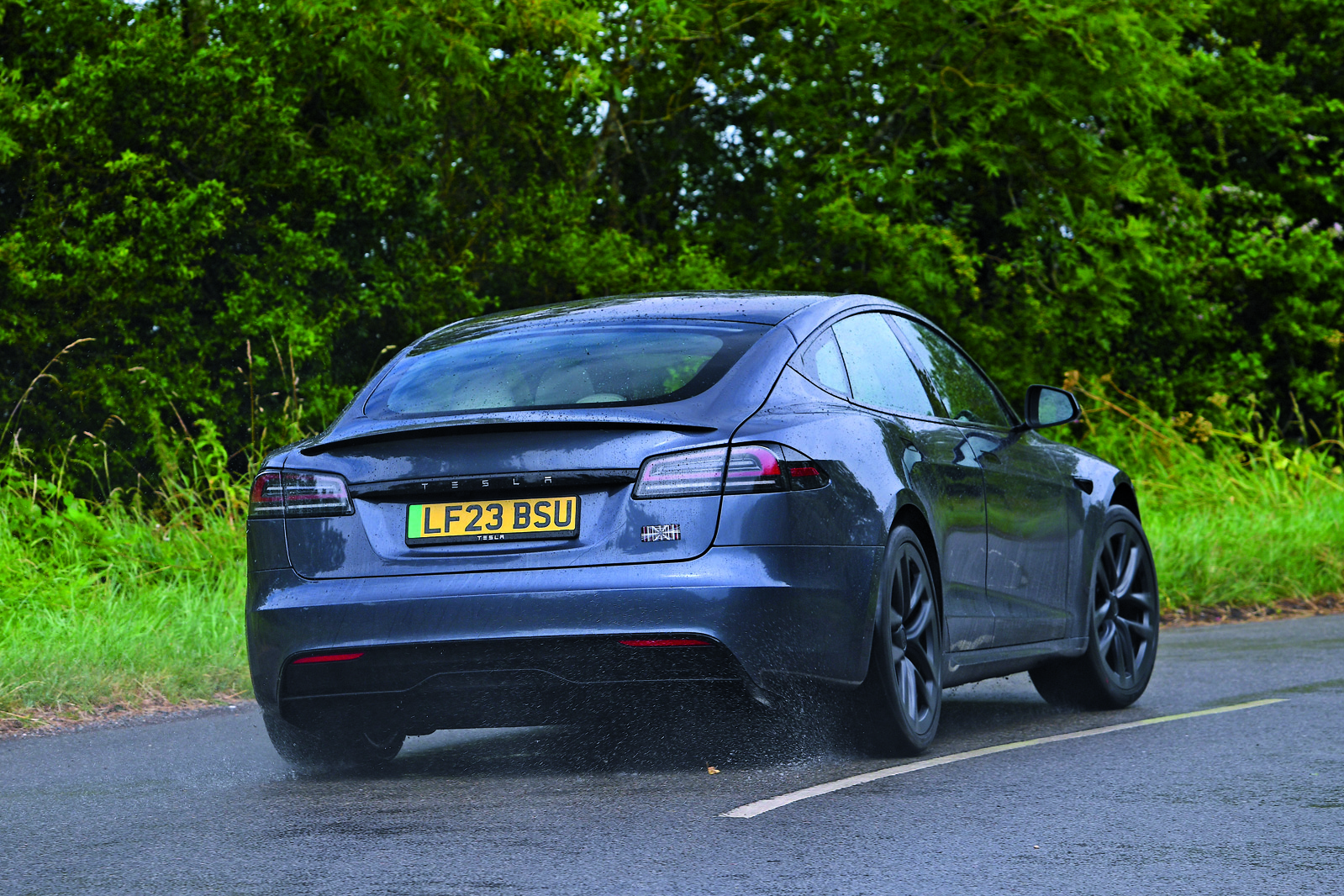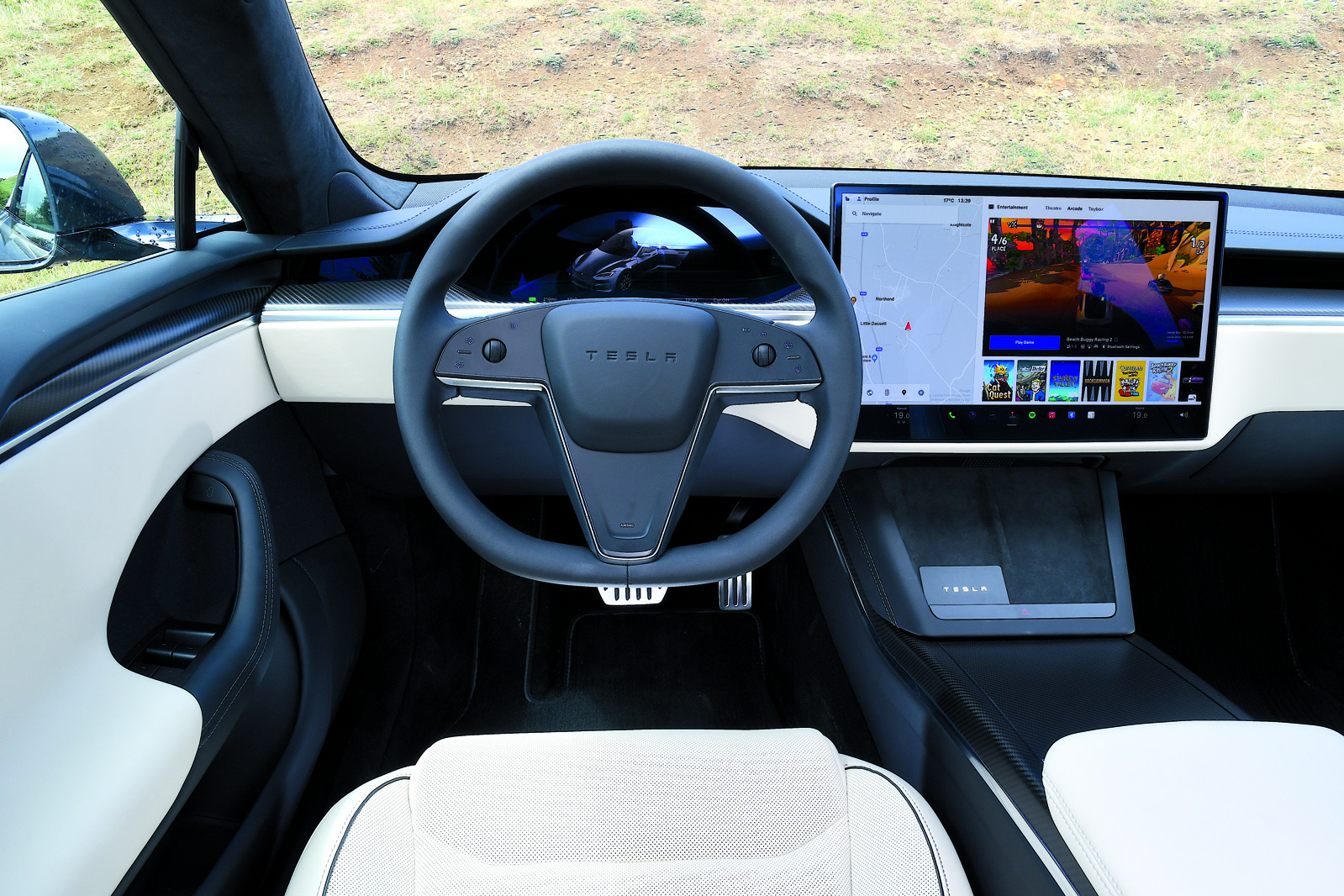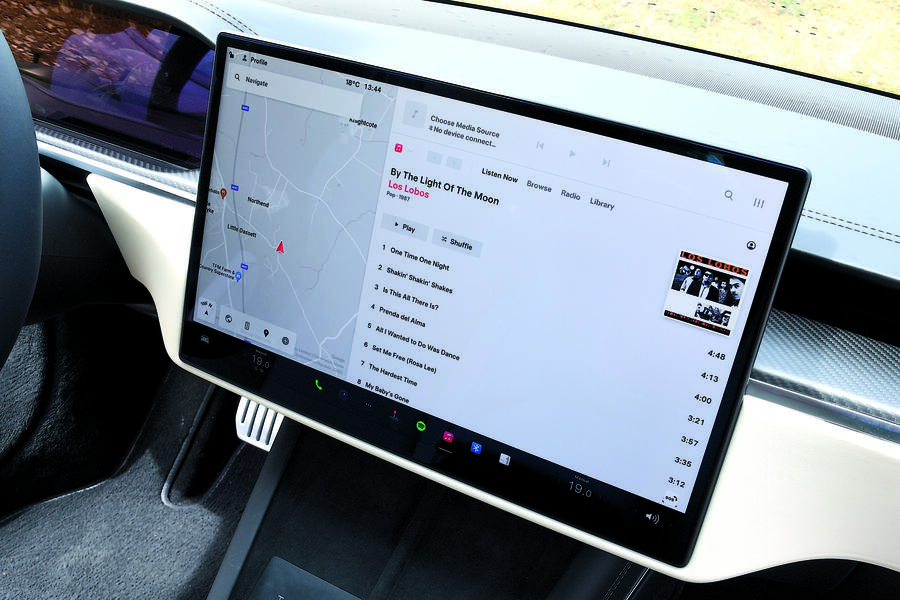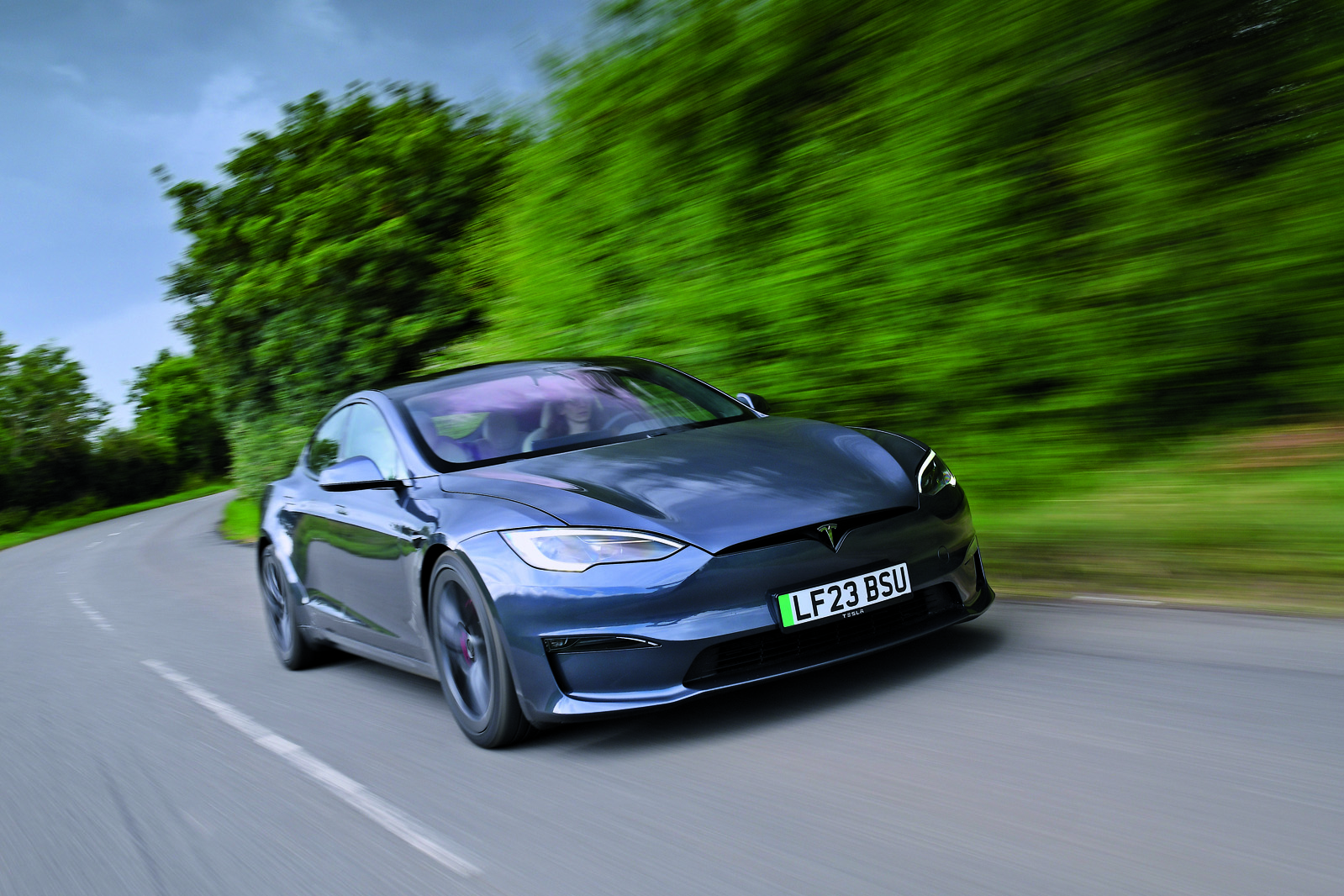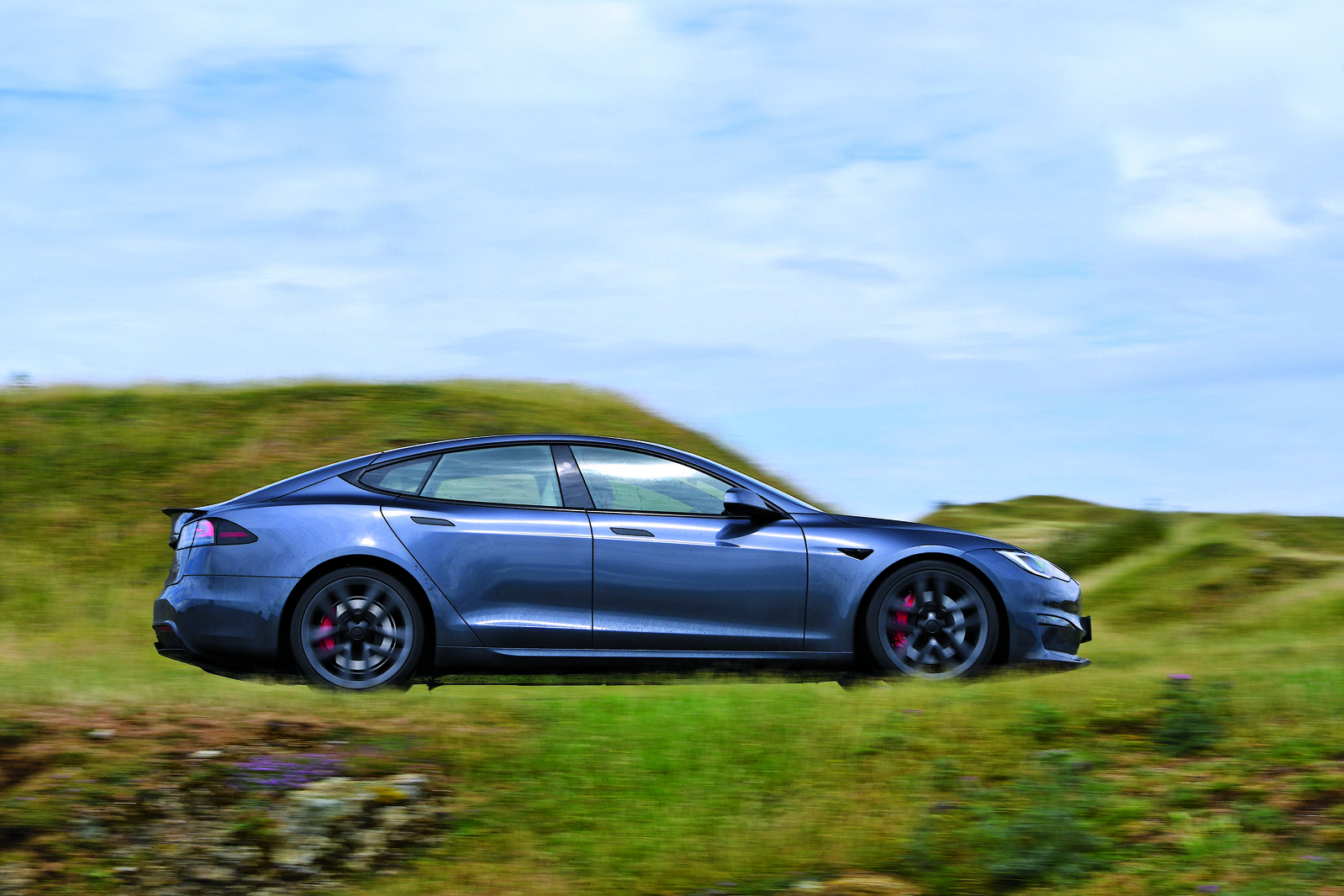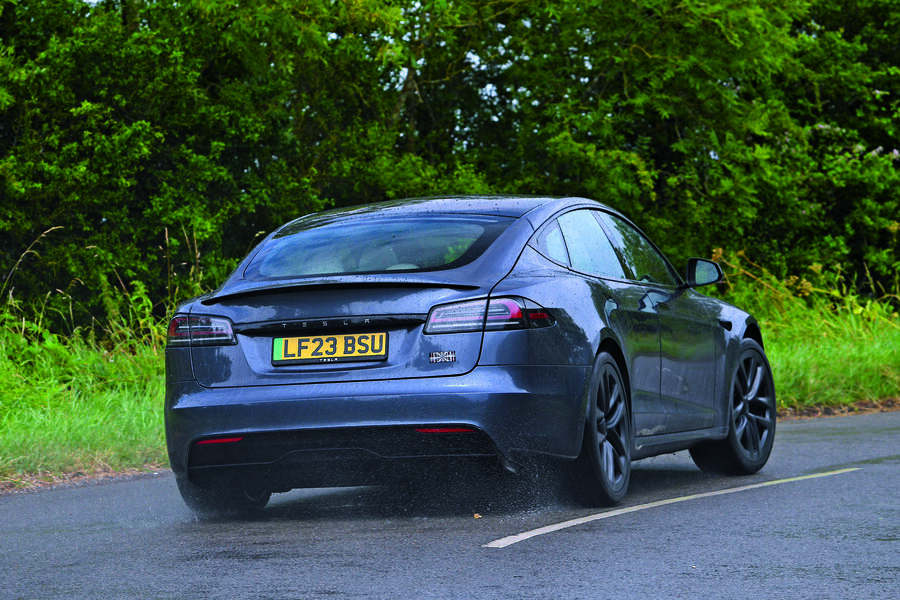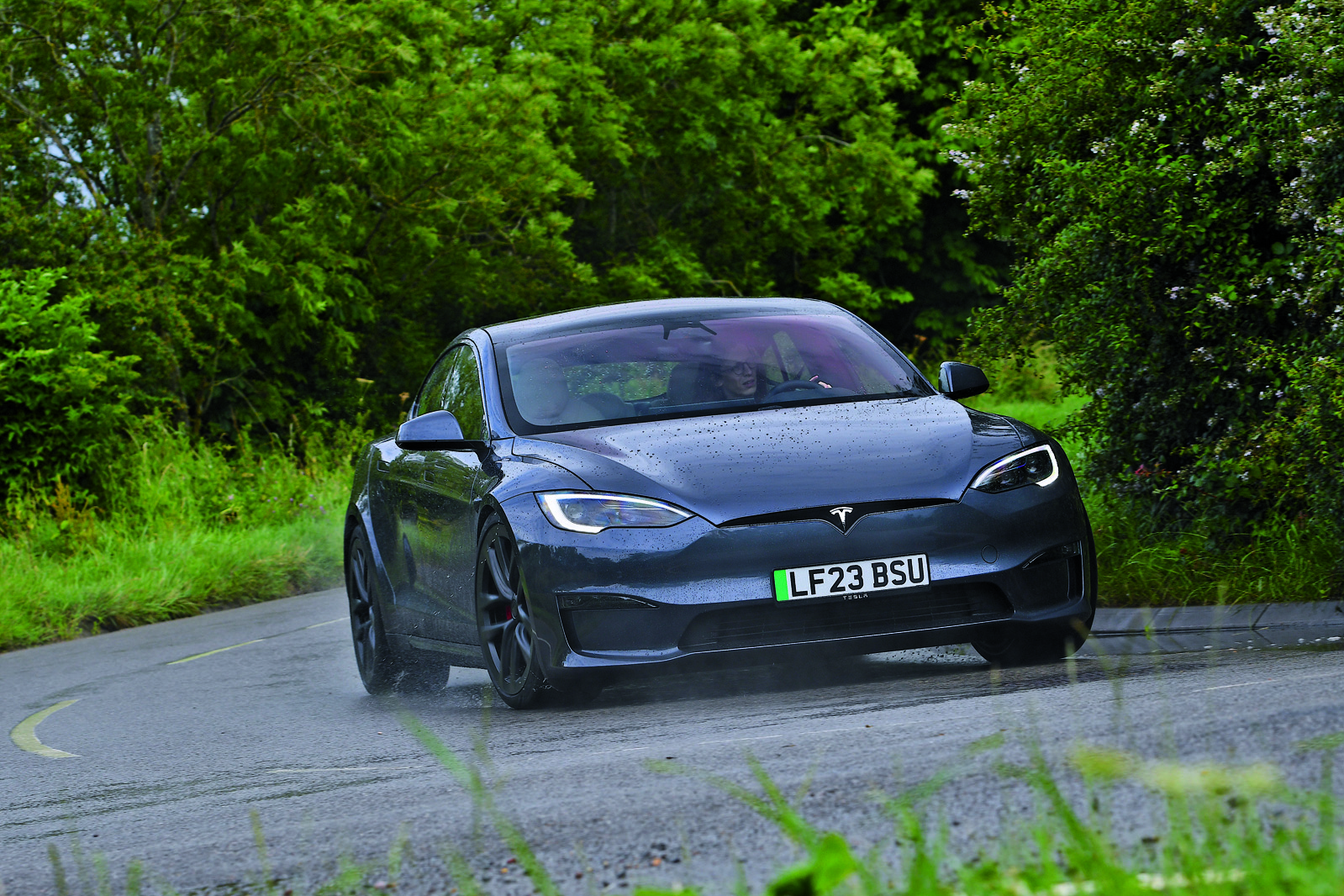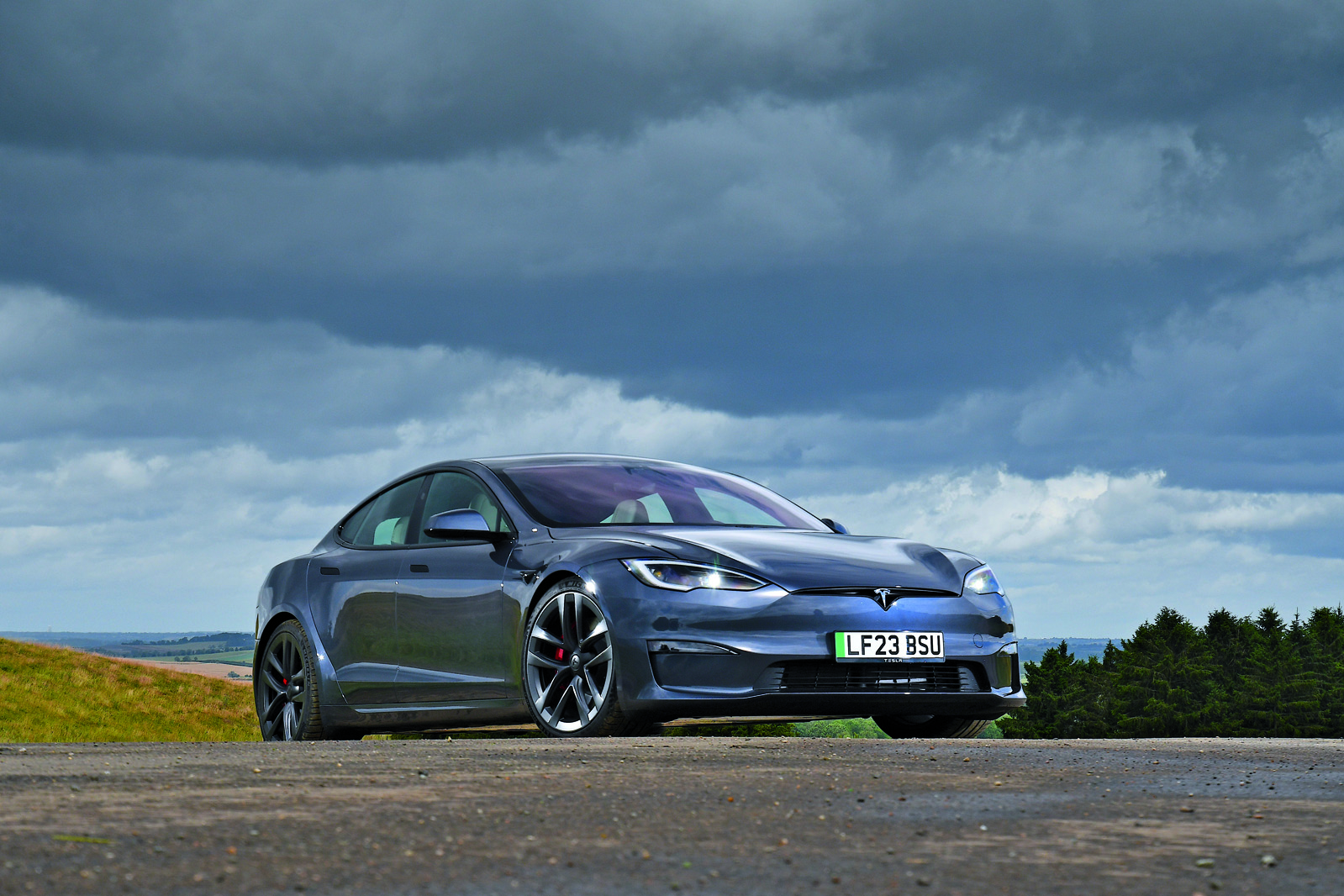To get the absolute fastest acceleration out of a Model S Plaid, it’s necessary to have as much charge in the battery as possible (we started our runs at 90%) and put it in Drag Strip mode. This pre-conditions the battery and puts it at the optimum temperature. It takes a while – about seven minutes or so.
When you put your left foot on the brake and floor the throttle, the Plaid takes a few seconds to enter its Cheetah Stance, lowering the front further to fight the front-end lift and give the front motor the best chance of putting its power down.
Do that and you will tick off 60mph in 2.4sec, 62mph in 2.5sec, 100mph in 4.6sec and 160mph in 10.9sec. The Tesla stays ahead of the Bugatti Veyron past each of those increments and also beats it to the standing kilometre, even though the Tesla has by that point been running against its limiter for 5.7sec and we had started braking for the end of Millbrook’s mile straight just before we passed the kilometre.
You might argue that the rigmarole with the Drag Strip mode and Cheetah Stance takes the shine off the performance. However, if you had even the smallest amount of mechanical sympathy, you wouldn’t do a full-bore standing start in a petrol car without first getting the engine up to temperature.
We also timed the Model S without the Drag Strip mode.In Plaid mode, it still hit 60mph in 2.7sec and 100mph in 5.1sec. In Sport mode, 60mph took just 3.7sec – faster than a Ford Mustang Mach-E GT. Even in Chill mode, which subjectively feels glacial after any of the car’s other modes, 60mph took just 7.3sec.
Clearly, the Model S Plaid generates a collection of absurd performance figures, but drivability on the road is a different matter.
Because of just how mind-bendingly fast it is, full throttle can be enjoyed for only a few seconds at a time on the road. However, it’s so immediate (even the fastest piston-powered supercars need an instant to select the right gear or spool up their turbos) and violent that it’s a visceral experience to be savoured.
Most of the time, we tended to drive the car in Sport mode, because there isn’t enough throttle travel to easily and smoothly control the huge amount of performance available in Plaid mode.
Where things get a bit more critical is in slowing down. Teslas don’t blend regenerative and friction braking like almost every other modern EV does. The brake pedal exclusively works the disc brakes, while regen is controlled purely by lifting off the accelerator.
Tesla’s one-pedal operation is among the most intuitive of any EV, so in normal driving, it works fine, but there are plenty of EV drivers who prefer to use both pedals.
On a track, the lack of brake blending is a serious issue. There, being able to apply the brakes accurately and firmly is essential, which is acknowledged by Track mode letting you dial down the regen. However, with regen out of the mix, the disc brakes have to face the inertia of this two-tonne, 1020bhp car alone, which causes them to overheat in short order.
The brake pedal feel itself is good, and the Plaid stopped from 70mph in 43.1m – decent for a heavy car.

Track notes (Hill Route, Millbrook Proving Ground)
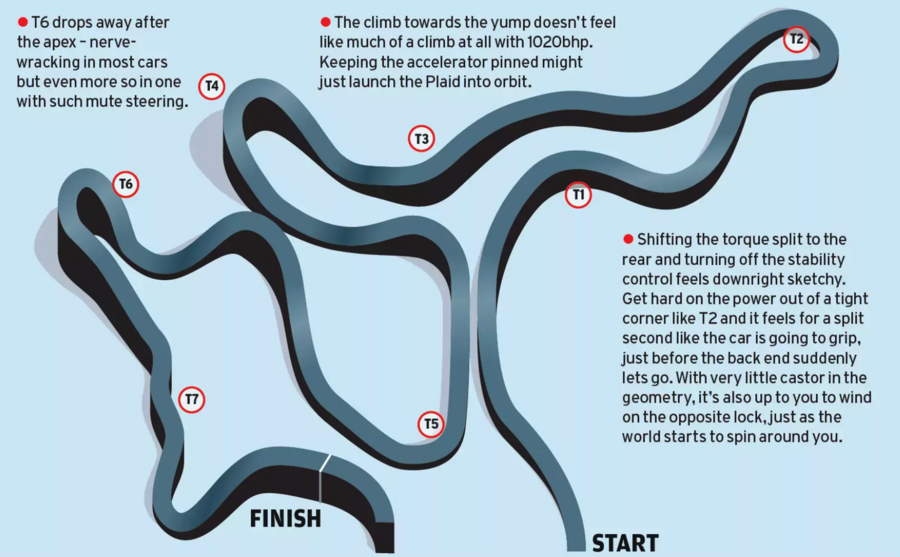
We managed to record acceleration and braking figures before the heavens broke over Millbrook but had to settle for wet laps of the Hill Route. However, while a good driver’s car is fun and gives you confidence even in suboptimal conditions, the Plaid felt unsatisfying and unpredictable.
The steering has a constant weight throughout and tells you nothing about grip levels. Leave the systems on and you will demolish the straights and tiptoe through the corners. Try to get on the power too soon and the front wheels will spin briefly and cause some understeer before the traction control puts a stop to it.
It feels at its best and most balanced in Track mode, with the traction control halfway, and the torque split set to about 35:65. The mute steering still stops you from leaning on the front end and Track mode locks you into the overly jumpy Plaid drivetrain mode. Dialling down the regen helps with predictability but quickly overheats the brakes.


